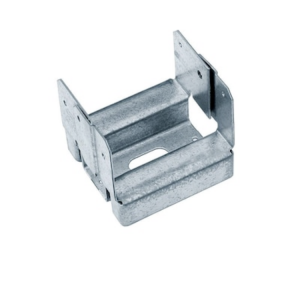I need to tighten the 3/4” nut that holds these Simpson post bases to the concrete.
The posts are already installed and a typical 3/4 wrench won’t fit in the recessed area of the base both vertically or horizontally. I don’t have enough vertical clearance to use the box end or a ratcheting box wrench either. There’s maybe an 1/8” of clearance between the stud and bottom of the 4×4 post.
My only idea is a hammer and punch to try and tighten the nut an 1/8 turn at a time. I believe they used drop in wedge anchors.
Any suggestions?




















Replies
I'd be inclined to pull the nails or screws that hold the post, swing it to one side enough to get the bearing plate up, and get a socket on the bolts.
If you are just trying to firm up the connection and cant find any tool….and hammer and punch doesn’t work.
Plastic shims. I’m lucky to have an iron worker that gave me an assorted box. Don’t crush, don’t rot. Flat bar it tight and cram in a shim or 2.
Thanks for the replies so far.
I need to tighten because they are basically hand tight. I don’t think they’ll go anywhere seeing how they were hammered in place, but getting a few turns on it would make me feel better.
https://www.amazon.com/Capri-Tools-Super-Thin-Open-Wrench/dp/B07FS3RKX8
If this is not thin enough, you can use a belt sander or flap sanding head on a grinder to further thin if you need to
Just go slow and be careful to secure well before putting the moving abrasive to the metal. space it out to avoid heating the wrench to the point it looses hardness.
I'd go with a hammer and punch, which worked for me. I had the same issue - and I just couldn't get a wrench in there to make it work. 10 min and you'll have it tight.
Anything w/ a box end may not work because the stud may get pulled upward as the nut's tightened. (and once that happens, you're screwed- no way to push the stud down again.) Ordinary open end w/ the sides ground off (skinnier in top view) may work. Two different brands w/ different angularity used alternately may help.
Hammer & punch is tedious, but it has worked in the past. Lube the threads and faying (contacting) surfaces first.